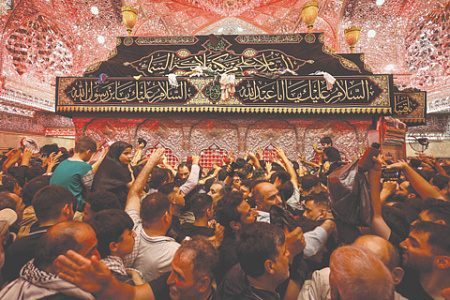
To comprehend the Arba’een pilgrimage in Iraq is to witness a spectacle of staggering scale and profound emotion. Imagine a somber religious procession fused with the vibrant energy of a massive festival, where tens of millions gather in a shared expression of grief-stricken love. This year, organizers estimate that 25 million Shia Muslim pilgrims converged on the holy city of Karbala, many having walked for days and tens of kilometers in blistering 50-degree Celsius heat to commemorate the martyrdom of Imam Hussein, the grandson of the Prophet Muhammad.
The pilgrimage culminates on Arba’een, the 40th day of mourning after the 7th-century battle where Hussein was killed. For many, the journey begins in the nearby holy city of Najaf, home to the shrine of Imam Ali, Hussein’s father. Here, millions arrive from across the globe—from Afghanistan and Pakistan to Lebanon and India—creating a vast, international sea of faithful. The landscape is transformed by a sprawling infrastructure of temporary encampments, offering pilgrims everything from a simple mat on the ground to modern, air-conditioned tents for rest.
In the oppressive heat, water is life, and it is provided freely. Along every major route, volunteers man stalls with iced water, handing out chilled bottles and small sealed cups to the endless river of people. This immense act of hospitality is the soul of Arba’een. An army of volunteers and charitable organizations sets up thousands of ‘mawkibs’—roadside pavilions that offer free food, shelter, medical aid, and services to all. This incredible display of social solidarity unfolds under the watchful eye of a heavy security presence, a constant reminder of the threats that have targeted the pilgrimage in the past.
Inside the magnificent, gold-domed shrine of Imam Ali in Najaf, the atmosphere is a dizzying blend of sacred devotion and bustling life. The vast, marble-columned courtyard feels at once like a palace, a transit hall, and a site of intense mourning. Some pilgrims sleep soundly on the ornate carpets, others pray with quiet intensity, while families connect with relatives on video calls, excitedly showing them the sacred surroundings. Periodically, groups gather to perform ‘latmiya’, mournful chants that recount the tragedy of Karbala, their voices rising in sorrow as they rhythmically beat their chests in a state of spiritual ecstasy.
From Najaf, the faithful proceed to Karbala, an 80-kilometer journey many undertake on foot. The highway becomes a moving tapestry of black-clad pilgrims, carrying flags and portraits of their beloved Imam. The destination is the shrine of Imam Hussein, an even larger complex where the crowd’s energy reaches a fever pitch. Reaching the sarcophagus requires not just spiritual fortitude but immense physical resilience. The sheer density of the crowd creates an overwhelming pressure, a human tide where individuals are carried along, their ribs straining against the mass of bodies. Yet, there is no anger or conflict, only a shared, desperate goal: to touch the tomb.
In the crush, pilgrims form human chains, linking arms to forge a path through the throng. Reaching the ornate metal grille of the tomb is a moment of cathartic release for many, a chaotic collision of euphoria and pain as the crowd presses them against the sacred structure. It is in these moments that the spirit of Arba’een is most visible. A pilgrim, face bruised but glowing with joy after touching the sarcophagus, might turn and press a small gift into a stranger’s hand—a ‘mohr’, a small tablet of pressed earth from Karbala’s sacred ground, used during prayer. It is a simple gesture of shared faith and humanity that transcends language and background.
This incredible event remains one of the most powerful, yet largely underreported, displays of faith on Earth. It is a journey defined by extremes—of heat, of distance, of emotion—but ultimately, it is a profound testament to a community united by a 1,300-year-old story of sacrifice, and a powerful, living expression of devotion that continues to grow each year.
